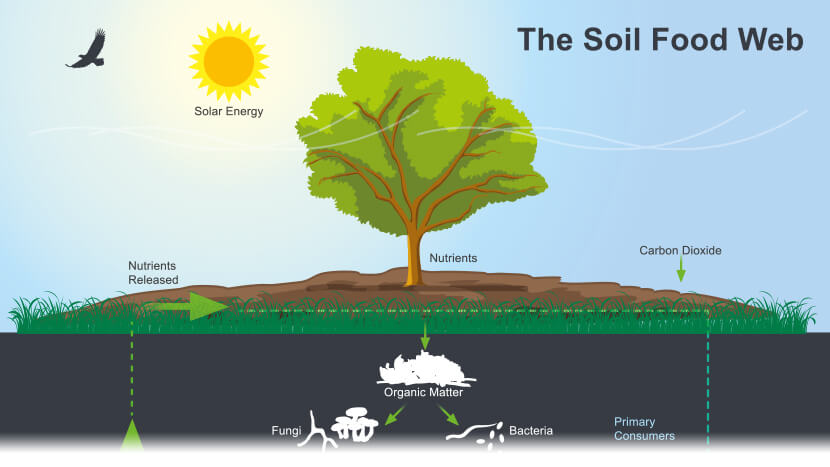For many people, the New Year resolution to eat more healthily is as traditional as drizzle on Christmas Eve. But we should be paying attention not only to our own diet, but also to the nutrition of our most important production resource: soil! Because the billions of living organisms that thrive in our farmland need regular feeding. Intermittent fasting or a starvation diet is out of the question for them.
Tons of hungry helpers
Beneath the surface of a hectare of farmland live around 15 tons of living organisms, subdivided into micro, meso, macro and megafauna. The spectrum ranges from fungi and bacteria to tiny single-cell organisms smaller than 0.2mm long to comparatively gigantic vertebrates. They all expect to be fed 365 days a year – and not just scraps of organic substances, but a balanced diet. For each one of them.
Chef de cuisine for hungry soil fauna
The role of soil fauna in the stability of soil, the humus content, the comprehensive supply of crop plants and the ability to resist pathogens or other adverse conditions cannot be overestimated. And the responsibility for the balanced nutritional composition of the soil – to satisfy the needs of all “eaters” – lies with you. But don’t worry: Being the chef de cuisine for such a hungry army is not as difficult as it sounds.
Malnutrition causes health problems
However, it does require a change in the way of thinking. Until now we have assumed that our fertilization measures nourished the crop plants appropriately. Instead, our approach must be: feed the soil fauna as much as it can eat! This is done by broad crop rotations, intercropping suited to the location and knowledge of the nutrient composition of the soil. In the last few years, a sulphur deficit has become apparent in many places, which – as with malnourished people – causes health problems. Because of the nutrient imbalance, the soil biology cannot perform its task properly; loss of quality for example in cereals and problems with crop protection can be the result.



